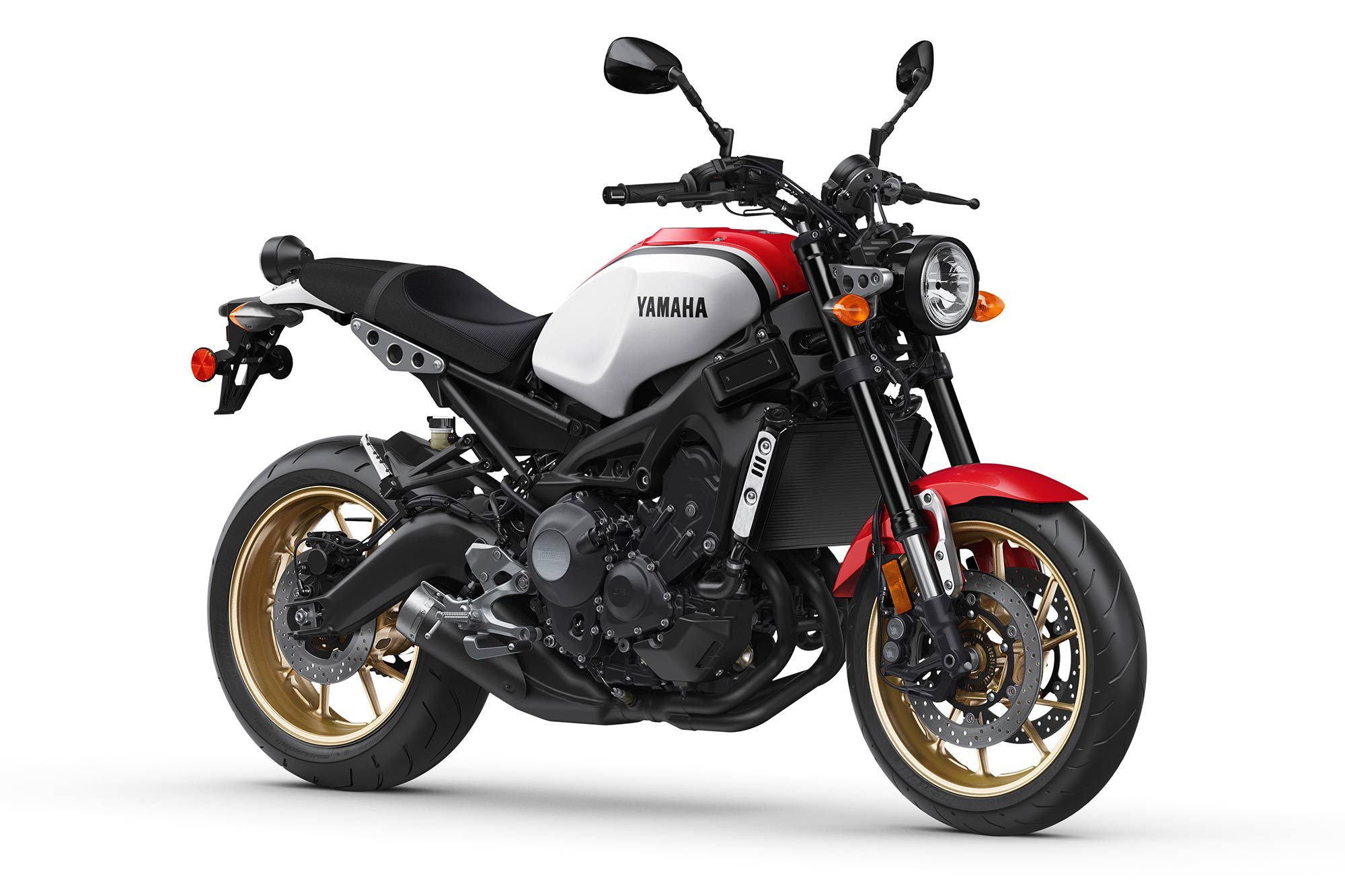
Ups
- Same superb 847cc engine, aluminum chassis as previous-generation MT-07
- Revised suspension = very good handling
- Sporty yet comfy ergos
Downs
- Didn’t get the updated 890cc CP3 engine in 2021
- “A” ride mode throttle response too abrupt for some
- Brakes a bit numb
Verdict
One of the more successful neo-retro bikes from the OEMs, the Yamaha XSR900 combines style and speed in a way biased more toward the performance side of the equation. Its smooth blending of classic looks with modern technology (plus a low sticker price) makes it a bargain compared to the competition.
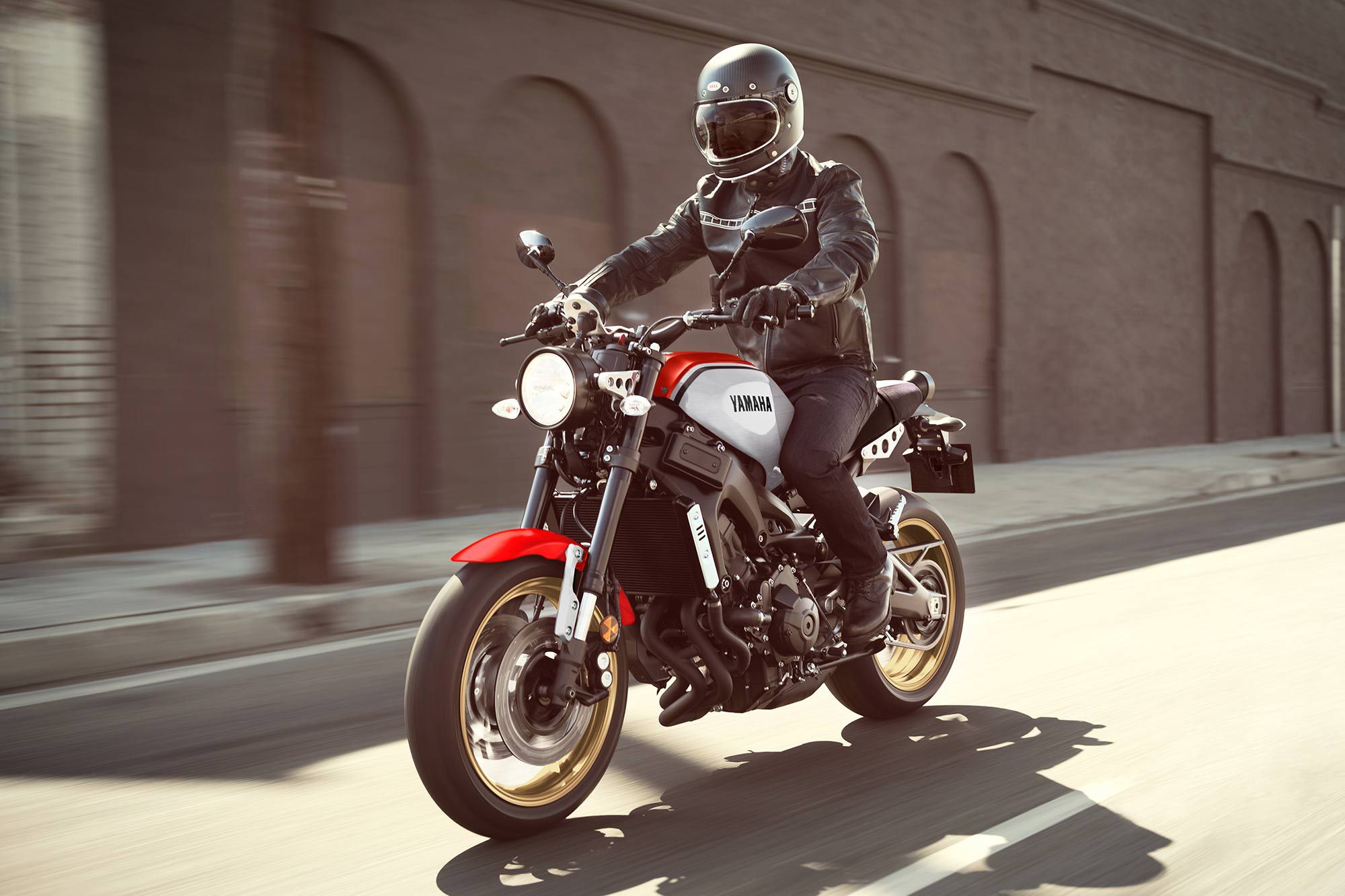
Overview
One of the many models in Yamaha’s lineup to make use of the superb MT-09 inline-triple engine/die-cast aluminum chassis platform, the XSR900 created quite a splash when it debuted in 2016. The cafe racer/scrambler/classic/retro heritage movement was already in full swing, and the XSR900 distinguishes itself from the others by conjuring visions of the past through a modern lens. There’s no attempt to replicate a classic Yamaha model from yesteryear; instead, the XSR brings simple retro style with current performance, including ride-by-wire throttle with different modes, two-level traction control, ABS, and LCD instrumentation. It swiftly garnered a spot in CW’s coveted Ten Best Bikes list for 2016.
Updates for 2021
There are no updates to the XSR900 for 2021. The Radical White/Rapid Red colorway is the only one available.
Pricing and Variants
The 2021 XSR900 has an MSRP of $9,499.
Competition
The XSR900′s most direct competitors are the Honda CB1000R, Kawasaki Z900RS/Café, and Suzuki Katana. From there, the retro/classic category becomes much more varied, but other models that could be cross-shopped include the BMW R nineT Racer, Ducati Scrambler Café Racer, Royal Enfield Continental GT, and the Triumph Bonneville T100 and T120.
You can read how the Yamaha XSR900 fared in this comparison with the Kawasaki Z900RS Café and Honda CB1000R. Or you could see the differences in retro philosophy in this comparison with the BMW RnineT, Harley-Davidson Roadster, and Triumph Thruxton R.
Powertrain: Engine, Transmission, and Performance
While the XSR unfortunately didn’t receive the new 890cc engine that graces the 2021 MT-09, the previous-gen 847cc is certainly no slouch, with “a strong, punchy power delivery” according to CW’s Morgan Gales in his XSR900, Kawasaki Z900RS Cafe, Honda CB1000R comparison test. On the Cycle World dyno, a 2020 XSR900 churned out 103.98 hp at 10,150 rpm and 58.92 pound-feet of torque at 8,050 rpm. As with the previous-gen MT-09, the XSR has three ride modes (“A” = aggressive throttle response, “Standard” = smoother throttle response, and “B” = mellow throttle response with slightly restricted top-end power) and two-level traction control (plus off). CW’s Don Canet preferred A mode in his First Ride Review of the original 2016 model, while MC Online’s Julia LaPalme liked Standard mode in her First Ride Review of the same model, as did Kent Kunitsugu in his First Ride Review. The XSR900 is equipped with a power assist/slipper clutch to ease both lever effort and downshifts.
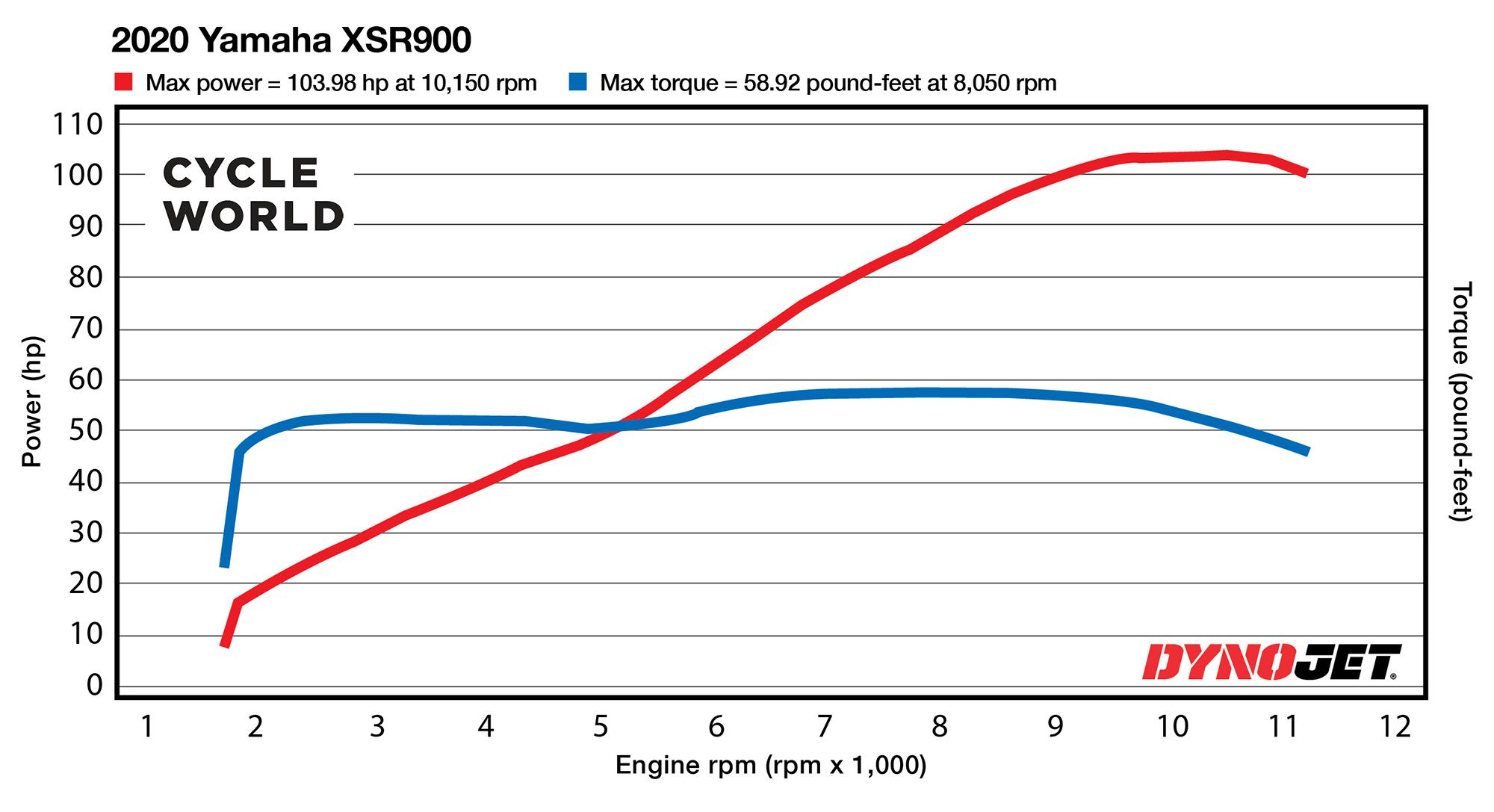
Handling
Yamaha firmed up the spring and damping rates from the previous generation FZ/MT-09, resulting in a much more composed ride when the pace ramps up in twisty sections of pavement. “The (FZ/MT’s) same nimble steering character remains on the XSR, but with a much more sure-footed feel that allows you to be aggressive when making steering or braking inputs,” Kunitsugu remarked in his First Ride Review.
Brakes
The same four-piston Monoblock Advics calipers clamp on 298mm discs up front provide excellent stopping power, though feel is a little lacking in really aggressive braking situations. ABS works well, and intervention is very transparent.
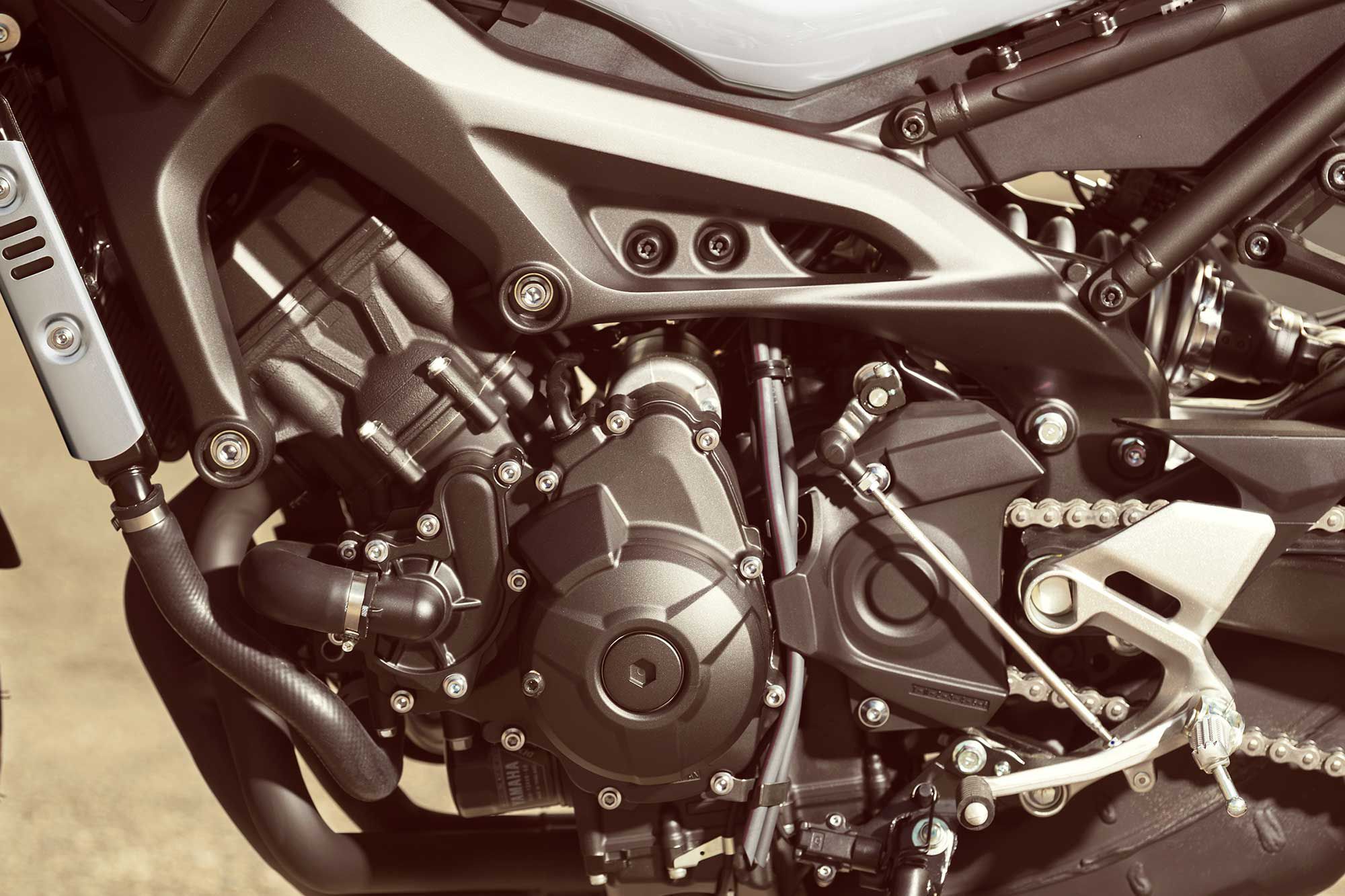
Fuel Economy and Real-World MPG
Yamaha claims 44 mpg from the 2021 XSR900.
Ergonomics: Comfort and Utility
Compared to the MT-09′s almost motocross-style ergonomics, the XSR900 is much more comfortable. The reach to the handlebar is longer and the bars lower, but this helps tilt the rider’s torso forward a bit to alleviate the wind blast. The seat is taller (with a CW-measured 32.7-inch seat height) and is well padded, and with the pegs slightly rearward helps provide more legroom. Passenger accommodations are much better due to the single-piece seat as well.
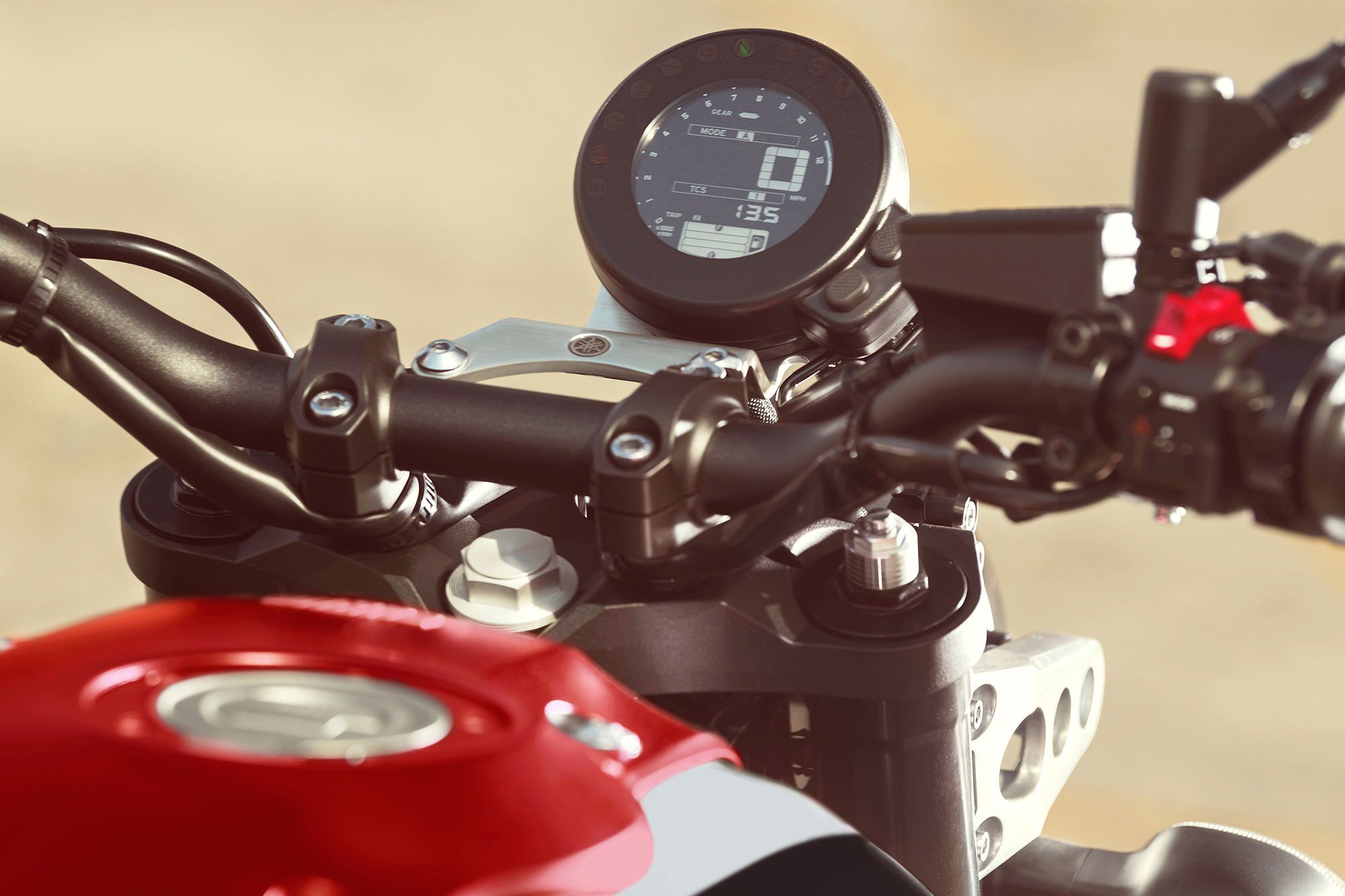
Electronics
As previously mentioned, the XSR900′s ride-by-wire throttle system has three ride modes (A, Standard, B) and a two-level (plus off) traction control system. ABS is included as standard equipment.
The XSR is fitted with a round LCD display featuring pertinent riding information. A round headlight adds to its retro styling while a LED rear taillight and brake light are mounted above the fender.
Warranty and Maintenance Coverage
The Yamaha XSR900 comes with Yamaha’s one-year limited warranty, with extended warranty and benefits available through Yamaha Extended Service.
Quality
Build quality and fit and finish with the XSR900 are excellent, especially for a bike that costs much less than its competitors.
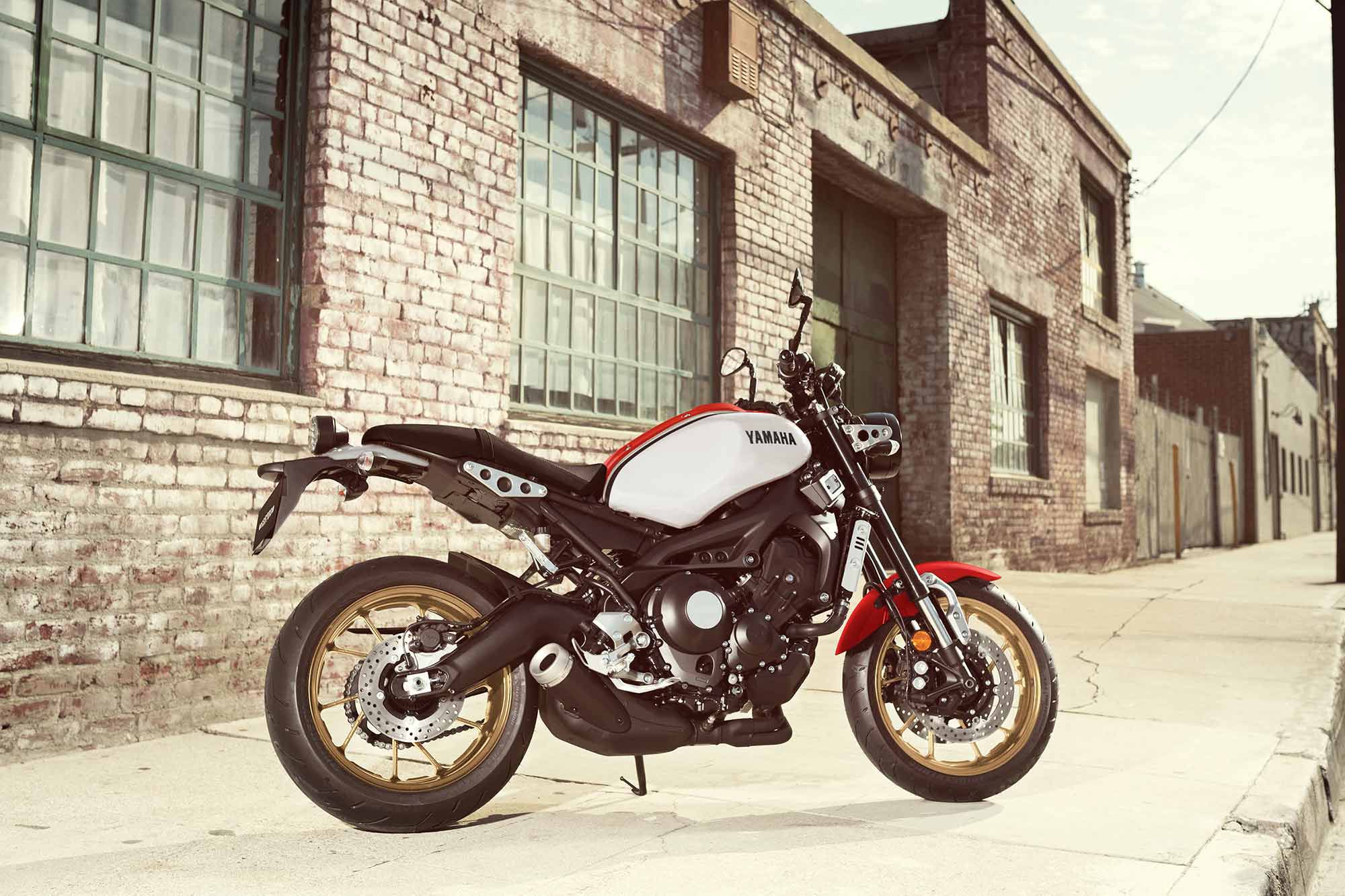
2021 Yamaha XSR900 Claimed Specifications
| MSRP: | $9,499 |
| Engine: | 847cc, DOHC, liquid-cooled inline-triple; 12 valves |
| Bore x Stroke: | 78.0 x 59.1mm |
| Transmission/Final Drive: | 6-speed/chain |
| Fuel Delivery: | Electronic fuel injection w/ 41mm throttle bodies |
| Clutch: | Wet, power-assist/slipper type; cable operation |
| Engine Management/Ignition: | TCI (Transistor Controlled Ignition) |
| Frame: | Controlled-fill die-cast aluminum chassis |
| Front Suspension: | 41mm KYB inverted fork, spring preload and rebound damping adjustable; 5.4 in. travel |
| Rear Suspension: | KYB shock, spring preload and rebound damping adjustable; 5.1 in. travel |
| Front Brake: | 4-piston Advics Monoblock calipers, dual 298mm discs w/ ABS |
| Rear Brake: | 1-piston slide-pin caliper, 245mm disc w/ ABS |
| Wheels, Front/Rear: | Cast aluminum, 3.50 x 17 in. / 5.50 x 17 in. |
| Tires, Front/Rear: | 120/70ZR-17 / 180/55ZR-17 |
| Rake/Trail: | 25.0°/4.1 in. |
| Wheelbase: | 56.7 in. |
| Ground Clearance: | 5.3 in. |
| Seat Height: | 32.7 in. |
| Fuel Capacity: | 3.7 gal. |
| Wet Weight: | 430 lb. |
| Contact: | yamaha-motor.com |
Cycle World Tested Specifications
| Seat Height: | 32.7 in. |
| Wet Weight: | 433 lb. |
| Rear-Wheel Horsepower: | 103.98 hp @ 10,150 rpm |
| Rear-Wheel Torque: | 58.92 lb.-ft. @ 8,050 rpm |
| 0–60 mph: | 3.48 sec. |
| 1/4-mile: | 11.52 sec. @ 121.25 mph |
| Braking 30–0 mph: | 38.6 ft. |
| Braking 60–0 mph: | 135.2 ft. |
Source: MotorCyclistOnline.com
